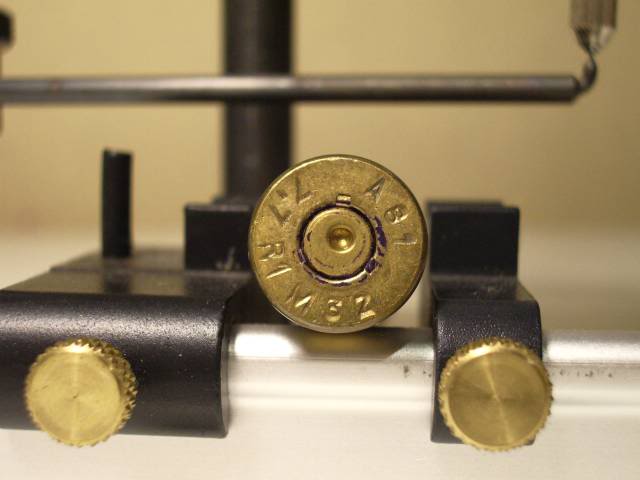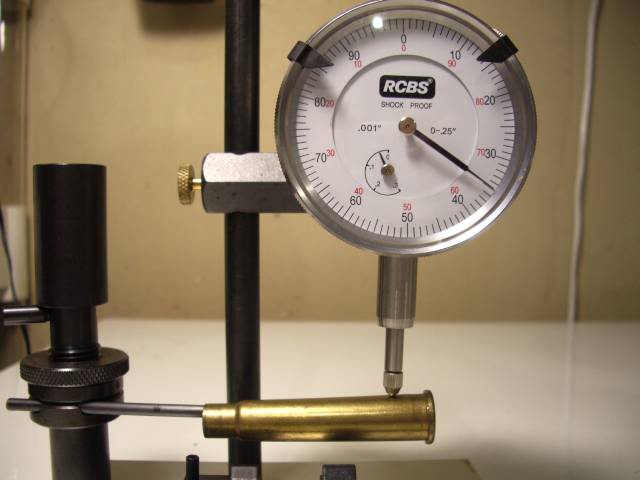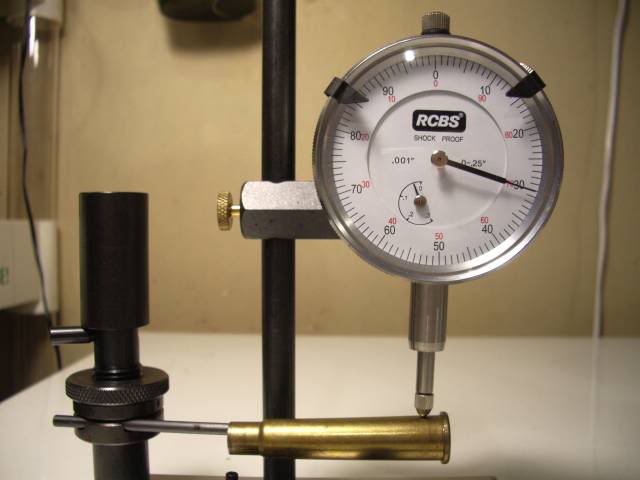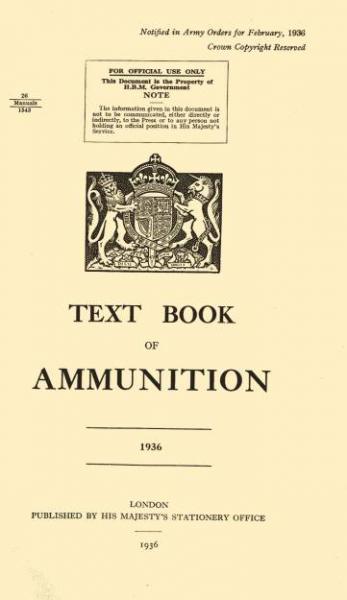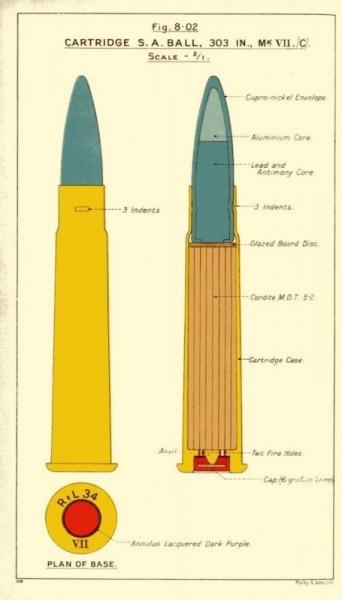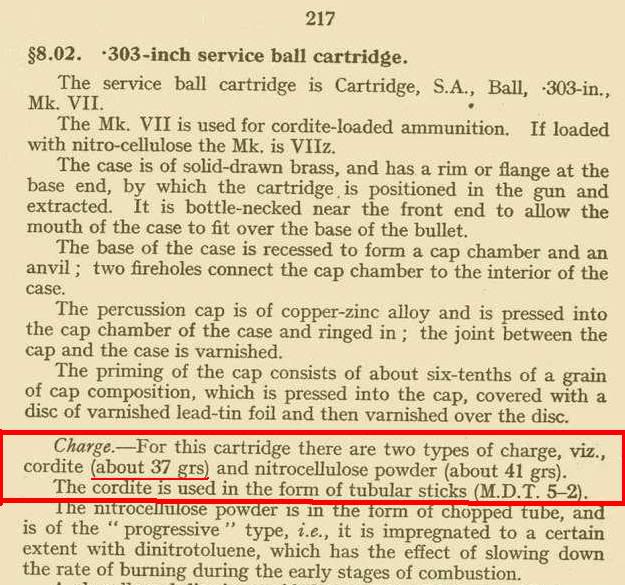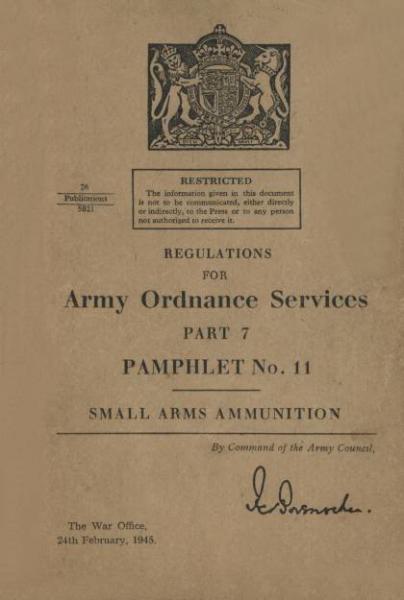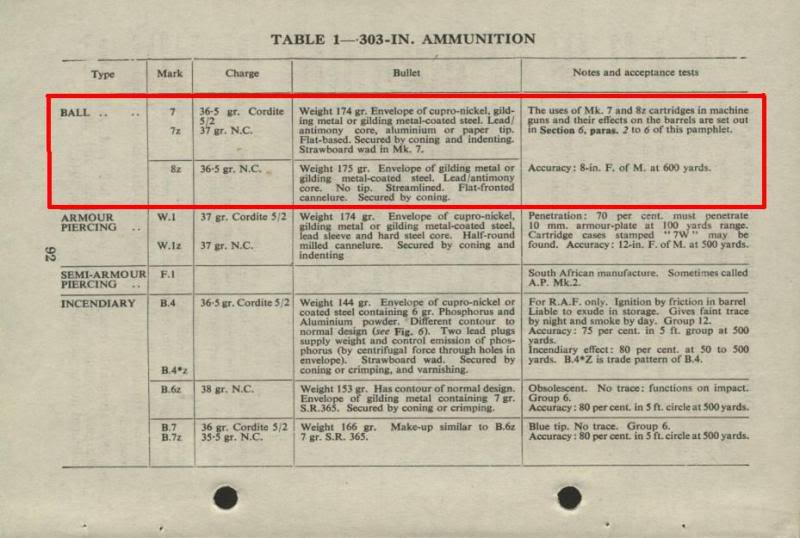-
Banned


Originally Posted by
ireload2

Hi Patrick,
I have engineering reference books for steels. I just don't know which steel to use. The calculations for the stretch and compression are very simple and only require the modulus of elasticity which is basically the same for all steels. The calculations are so simple any one that disputes them could easily makes the same calculations and provide his own results for discussion.
I have calculated the average load/sq in for the #4 receiver. Since I do not know what steel is used I do not know if the loads approach the yield point of the steels. With very high test pressures it appears that the right receiver rail can approach yield stresses. That occurs at 85ksi and higher. However that is based on an assumption of the steel used. Without knowing the tensile and yield strengths of the alloy any results will remain disputed.
My measurements for the area of the right wall give .1582 Sq inches.
The area of the left wall is .2838 sq inches.
Both receiver walls added have a total area of .442 sq inches.
This data can be used to determine the stress in the steel per sq inch.
From the stress calculation your result can be compared to the physical properties of the steel at various chamber pressures.
From comparing the areas of the two rails you can see the tendency of the #4 receiver to bend with each shot. Since there are two locking lugs if you assume you apply the same load to each rail the right rail will stretch almost twice as far as the left rail. When this happens the receiver bends.
The *spreading of the receiver or action on the Enfield is most likely caused by excess bolt thrust causing the action to spread apart. If you put a small screw through the No.4 where the rear sight retaining pin goes and tighten a nut on the end of the screw you can bind the bolt or cause the action to close up.(*Newtons third law)
-
06-21-2009 03:43 PM
# ADS
Friends and Sponsors

-
Advisory Panel


Blue is the new brown!
It's the same in German . "Brünierung" is the word for bluing, derived from "braun", regardless of whether the actual color is blue, black or even (rarely) actually brown.
. "Brünierung" is the word for bluing, derived from "braun", regardless of whether the actual color is blue, black or even (rarely) actually brown.
Patrick
-
-
Banned

-
Banned

About all I've found out so far is that locking surfaces were heated with copper electrodes.
This solved another minor mystery for me.
My 1915 bolt has traces of what appear to be copper fused to the surface near the locking surfaces. These spatters were polished away before finishing but remain visible even now. This also suggests that this bolt was probably never refinished, and since bluing was nearly completely intact when the previous owner bought this rifle its likely it saw almost no wear or use in combat during the WW1 era or afterwards.
I've been told that the same method was used to harden the locking surfaces of the receiver. A Lithgow action I have showed a very distinct difference in reaction to cold bluing solutions, the area over the locking recess of the left receiver wall turned black immediately while the rest of the receiver barely changed color at all. Same for a wedge shaped section at the right hand locking surface. I never tried bluing the bolt of that action.
I had suspected that this Lithgow action was a rewelded drill rifle due to the difference in the way the metal reacted at these spots. I'm still not sure that it isn't. The metal of the receiver at the righthand locking surface looked bulged out like it was metal added there, and the circular spot over the left recess was domed outwards. Both sides showed deep marring from application of a wire wheel with the less hardened metal deeply scarred and traces of what looked to be brass wire still hung up in grooves behind the righthand surface. I smoothed all that down long ago so I can't post any pictures of what it looked like.
The rest of the metal of this receiver seemed far softer than it should be, and the front of the receiver ring had been mutilated during the process of having a barrel put on long ago, whether the original barrel or a replacement. A new condition replacement barrel would not clock in at all.
The extractor spring had been replaced with a small diameter coil spring, which I've found was used with deactivated drill purpose only rifles, so the bolt head and probably the the non matching bolt body almost certainly came from a DP'ed rifle.
I gave up on restoring this rifle, and kept the action for use in a .410 conversion project. I wouldn't trust it with a .303 chambering. It should be okay for .410 pressures or less intense sporting cartridges like the .32 Winchester special.
An entry in Skennerton 's book dealing with Lithgow rifles converted to 7.62 NATO was posted on another site. It made an ambiguous remark about the actions used being "degraded" by use of Carbon steel rather than Chrome-Nickel Steel.
's book dealing with Lithgow rifles converted to 7.62 NATO was posted on another site. It made an ambiguous remark about the actions used being "degraded" by use of Carbon steel rather than Chrome-Nickel Steel.
I had thought that Lithgow rifles used a Nickel Steel Alloy, if so the test rifles may have been late WW2 or Post WW2 receivers made with a lesser strength but far cheaper alloy. If steel supplies were unable to keep up with production substitution of a lower grade steel would explain the apparent weakness of this particular late WW2 production receiver, and why it ended up being DP'ed if thats what happened.
Though the receiver bears all ten inspection marks the track for the sear is milled far off center, and shouldn't have passed inspection for that reason alone.
Alot of people have posted of finding DP only rifles that looked to be in perfect condition, and its usually assumed these were downgraded to Drill Purpose only through Obsolescence, but its not unlikely that rifles accepted and later found to have been from lots that had constructed from substandard materials due to wartime shortages would have been pulled from service and deactivated.
Substandard wood shows up fairly often, and I've seen a few metal parts such as sears that failed due to poor heat treatment.
Attrition should have resulted in most substandard rifles being DP'ed or destroyed decades ago, but one shouldn't take anything for granted where safety is concerned. I testfire remotely every rifle I buy, including modern production rifles. A rifle that passed proof generation ago may have been rebarreled or had force matched replacement bolts and such installed without the seller's knowledge.
According to a book I have on buying and selling surplus rifles (printed in the 1960's) British Surplus rifles were often sold by the pound at scrap metal prices after WW1 and WW2.
British Surplus ammunition was also sold by the pound to scrap dealers, the propellants were broken down chemically as the basis for furniture finishes and high strength glues, the brass either reloaded, or more often melted down as scrap metal. The author of that book, George Herter, said most attempts to salvage cases and propellants proved unproductive and FMJ bullets had little value to reloaders at the time.
While I'm sure there are isolated instances of very high quality Milsurp ammunition that had been stored under perfect conditions remaining safe enough to use today, I figure its false economy to subject a valued antique rifle to any but the best ammunition, and taylored handloads will give the best accuracy with any centerfire rifle whether milsurp or of the best quality modern production.
Heres some info on the reproduction No.4 based rifles
Features Standard on All M10 Rifles
Heavily reinforced forged steel receiver:
All AIA M10 rifles feature a forged ordnance steel receiver built much thicker than the original Lee Enfield's to withstand heavy use with modern military spec 7.62x51mm ball ammunition.
Easily accommodates most rifle optics with optional weaver rail:
Another big improvement over surplus Lee
Enfield Rifles
is the strengthening and thickening of the receiver bridge which, along with the receiver ring, is drilled and tapped for use with an optional steel weaver scope base.
Central to the new rifle's design is its heavily reinforced forged ordnance steel receiver, recessed, thickened, and fully enclosed bolt head, and 'Canadian Long Branch' type strengthened locking lugs with anti-chip bevel, enhancements
Marstar Canada: Australian International Arms Index Page
Skennerton had this to say
Like WW2 British and WW1 peddled scheme Lee-Enfields, components are sourced from a number of countries. This has also changed over the past 7 years as new technology and suppliers come on line. Over the past 7 years, some parts have been made in Vietnam, just as some parts originated from
England
and the
United States
. Original some surplus small parts such as springs and screws were utilized, but these were found to be inferior to new made components.
The Mystery of Australian International Arms
So Wartime parts aren't always up to snuff, and its likely parts made long after the wars by third world user governments or private concerns may be even less able to stand up to hard use.
I'd read that at least one British operation during WW2 was set up to use p parts that were significantly out of spec, and required hand fitting or other time consuming repairs to be serviceable. Retired Enfield employees ran the show and the operation served to train prospective employees that were as yet underaged and inexperianced in gunmaking.
Rifles they turned out were sevicable, but parts interchangability had pretty much been sacrificed. The rifles never went to the front, because if damaged standard replacement parts were unlikely to fit.
What follows is of little use to the milsurp only user/collector, but fits in with the reproduction miltary style rifle idea.
The A-10 is an interesting development, long ago I'd thought on ways the No.5 action could be manufactured in updated form for sporting rifles.
My idea had been actions proportioned for the .30-30 Winchester and similar sized cartridges, the 7X30 Waters for example.
A shorter receiver and some sort of added safety lug, more for product liability concerns than anything else, and the stock much like the Jungle Carbine with an effective streamlined muzzle brake rather than the flash hider.
The idea being for a rifle that had the features of a military carbine that would be of benefit for rifle used in the rough country around here. One often has to negotiated cliffs and climb trees to get a shot, and fording streams is also common enough. There are still areas here where modern man has yet to tread.
I came up with my own Scope base design, and made one for myself and a few for friends to test the concept. Its extremely stable and sturdy. I'd come up with the idea when examining the bulky designs used for early No.1 sniper rifles of various types, and the mounting of the T rifles.
Its semi permanent, but can be removed and the holes filled in, should restoration be desired. These rifles were pre Bubb'ed so preserving the original configuration wasn't an issue at the time.
Charger loading is unaffected with the scope dismounted.
I can alter the design so that no drilling and tapping need be done, and the mount could then be easily reversed without leaving any holes to be filled in.
At least for British style No.4 receivers. I found that the charger bridge of these were secured with screws, the heads having been ground flat after they were dogged down. Savage Receivers have the bridge brazed into place, so require more work. Not something of interest to the collector, but it would be usable for a new production rifle based on the No.4-No.5 action designs.
The A-10 modified bridge resembles my design, but it not quite the same.
Last edited by Alfred; 06-21-2009 at 04:23 PM.
-
Legacy Member

>>>Your chart on the estimated pressure or force on the bolt face mean nothing because the case is designed to grip the chamber walls and NOT deliver the full force of discharge to the bolt face. Simply put the case acts like a shock absorber and cuts the force in half delivered to the bolt face.<<<
Sorry, the case is not designed to absorb the thrust to the bolt. That it has to in the case of many rifle actions is a throwback to the black powder era's low pressures. You cannot find a design drawing that says that or provides the test specifications that would be used to test for it.
Did users of Lee-Enfields call off battle when it was raining?
If a proof load developing 75,000 PSI is fired in a #4 the stress on the right rail is about 65,000 psi due to it small cross section area. This probably matches or exceeds the yield strength of the steel used for the #4 receiver. This will result in permanent stretching of the right rail and deformation of the receiver even though the barrel will still be is perfect condition.
I expect that somewhere in the range of another 10,000 PSI (85,000 PSI) to break the right rail.
If it has some sort of stress concentrating notch, dent or divot from handling or manufacturing it could fail at a lower value.
The US M-14 National Match rifle is proof fired with cartridges that meet specification MIL-C-46477B.
Prior to proofing the assembled rifle, the barrel shall have already been proofed with the same proof cartridges. The assembled rifle is proofed after the barrel installed.
MIL-C-46477B requires the cartridges to be conditioned to 68°F to 72°F when being tested for compliance to the standard. The standard requires the PROOF cartridges develop 67,000 PSI ±2500 PSI. It appears that these proof loads would give you indeterminate results with a #4 action proofed with NATO proof cartridges. Operating pressure of 7.62 NATO service ammunition is given to be 50,000 PSI.
This information is just provided as information to suggest that conversions to 7.62 NATO is not such a good idea. It is even worse to convert such a rifle to .308 Winchester and use commercial ammunition in it. The minimum .308 Win proof pressure is 83,000 PSI and the maximum .308 proof pressure is 89,000 PSI. Maximum operating pressure of the .308 Win commercial ammunition is 62,000 PSI.
Last edited by ireload2; 06-21-2009 at 08:21 PM.
-
-
Banned


Originally Posted by
ireload2

>>>Your chart on the estimated pressure or force on the bolt face mean nothing because the case is designed to grip the chamber walls and NOT deliver the full force of discharge to the bolt face. Simply put the case acts like a shock absorber and cuts the force in half delivered to the bolt face.<<<
Sorry, the case is not designed to absorb the thrust to the bolt. That it has to in the case of many rifle actions is a throwback to the black powder era's low pressures. You cannot find a design drawing that says that or provides the test specifications that would be used to test for it.
Where do you get your Bovine Scat? Bovine Scat = BS

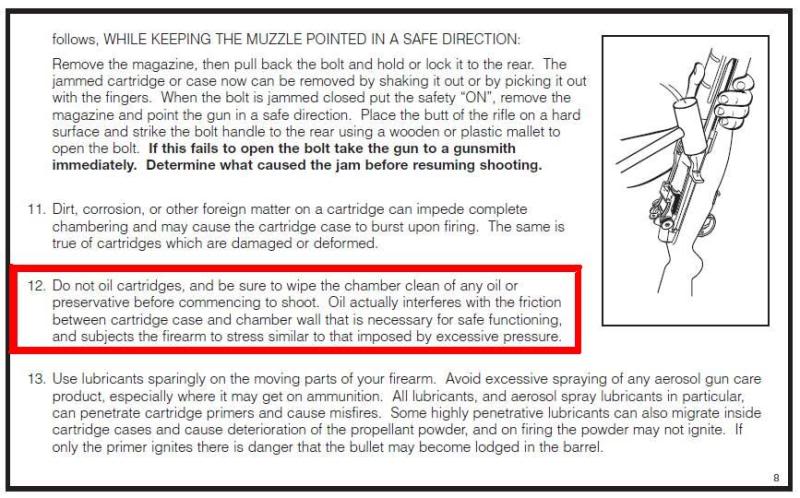
Last edited by Edward Horton; 06-21-2009 at 09:57 PM.
-
Banned

P.S. You would look good in a beaver hat or do you still wear your coonskin hat.
I once owned a Coonskin cap, had my photo taken with Fess Parker in fact. Wish I knew what happened to the photo, I did find another I was given at the time, an official news release photo from the premiere of "Davy Crockett".
Browning is an inaccurate term for Bluing, Browning of steel is an entirely different process, its also known as Pickeled steel and its why the British musket was called the "Brown Bess".
musket was called the "Brown Bess".
The formula may come in handy.
Ireload
I looked up the ability of Nickel Steels to recover from stretching forces awhile back, I'm still figuring that Nickel was used in the Enfield receivers, though I haven't found any confirmation yet. Significant Nickel content would help the receiver recover its original dimensions without plastic deformation, at least up to a point.
I'll find those specs again, I'm pretty sure this is why they chose Nickel steel for the P-14 and M1917.
Proof testing an action is to establish margin of safety in worse case scenarios, not whether it will hold up to standard loads indefinitely. Metal fatigue of many thousands of standard pressure rounds might well damage a receiver more than the occasional excessive pressure round. And bore conditions can cause excessive pressures with otherwise safe loadings.
The British sources that do mention damage to receivers almost always say something about the rifle getting hot from extended firing. The MkVII round did cause cook offs in locked breech MGs so its possible under extended rapid fire sessions they could heat a rifle receiver enough to cause expansion of the side rails with increase of headspace, or unequal expansion and resulting unequal forces on locking surfaces.
I expect that somewhere in the range of another 10,000 PSI (85,000 PSI) to break the right rail.
That coincides with the 85,000 PSI breaking point of the LE receivers quoted in the Canadian House of Commons records. They also stated that pressure of the MKVI load was 16.5 Tons, the later MkVII is listed in Ed's manuals as 19 Tons or more. British Proof marks on No.1 Receivers usually are for 18.5 Tons, so the MkVII was pushing the safe limits of the design.
House of Commons records. They also stated that pressure of the MKVI load was 16.5 Tons, the later MkVII is listed in Ed's manuals as 19 Tons or more. British Proof marks on No.1 Receivers usually are for 18.5 Tons, so the MkVII was pushing the safe limits of the design.
Last edited by Alfred; 06-21-2009 at 10:27 PM.
-
Banned

-
FREE MEMBER
NO Posting or PM's Allowed


Originally Posted by
Alfred

They also stated that pressure of the MKVI load was 16.5 Tons, the later MkVII is listed in Ed's manuals as 19 Tons or more.
British
Proof marks on No.1 Receivers usually are for 18.5 Tons, so the MkVII was pushing the safe limits of the design.
British proof marks are safe working pressures not the pressure the rifle was proof at. The difference would still be safe for a great deal of rounds and the average solider wouldn't A) know the pressure difference and B) fire enough rounds to damage the receiver.
Things like the replaceable bolt heads on the Enfield were not put there to cover up a "weakness" but instead allow the rifles to remain in service far longer then any other rifle design.
Bolt suffering from setback and increased headspace? Replace the bolt head and see if it will print on target well enough (ie somewhat of a useable bore) if it will shoot minute of man no need to send it back for Armory Repair/FTR in the middle of a war.
If the bolt is suffering from setback and a new barrel is needed then the different bolt heads will allow the armorers to install a barrel with a properly done head space then using the different bolt heads allows the armorer to make up for the bolt set back.
Dimitri
-
Banned

Ed's last reply had nothing to do with what he was supposedly replying to.
His previously quoted pressure figures for the MkVII were 19 Tons or more and he pretty much repeated that, Pressures for the MkVI have always been quoted as lower than those of the Mark VII. Ed's reply made no sense.
The Q series of Proof test cartridges were listed at pressures exceeding 20 Tons, far in excess of 20 Tons in fact.
Now as for the Cartridge case absorbing Bolt Thrust, if so Ed's repeated postings of methods of fire forming the .303 case would result in effective zero headspace, in which case there would be next to no portion of the bolt thrust relieved by the case gripping the chamber walls, The case already resting against the bolt face. Fire forming using a spacer ring as Ed suggests would negate any effect that the case gripping the chamber wall might have had.
We already knew that replacing bolt heads could keep a worn rifle in service, and that used bolt heads were often mix and matched between rifles to cut costs. So a prefectly good rifle might end up with a bolt head salvaged from a rifle that had been damaged by excessive pressures. That bolt head might be damaged in some way not easily visible on inspection. Unless re Proofed with the replacement bolt head theres no garantee it would hold up.
A member of another forum posted that a fresh from the Wrap FTR'ed No.4 had blow out its bolthead when test fired remotely. So my own habit of test firing seems to be the wise move, at least if sending a rifle in for re proof is not feasible.
Many of the rifles on the market today came from third world user governments, and may have never been properly inspected since leaving the factory, if then.















 Register To Reply
Register To Reply







